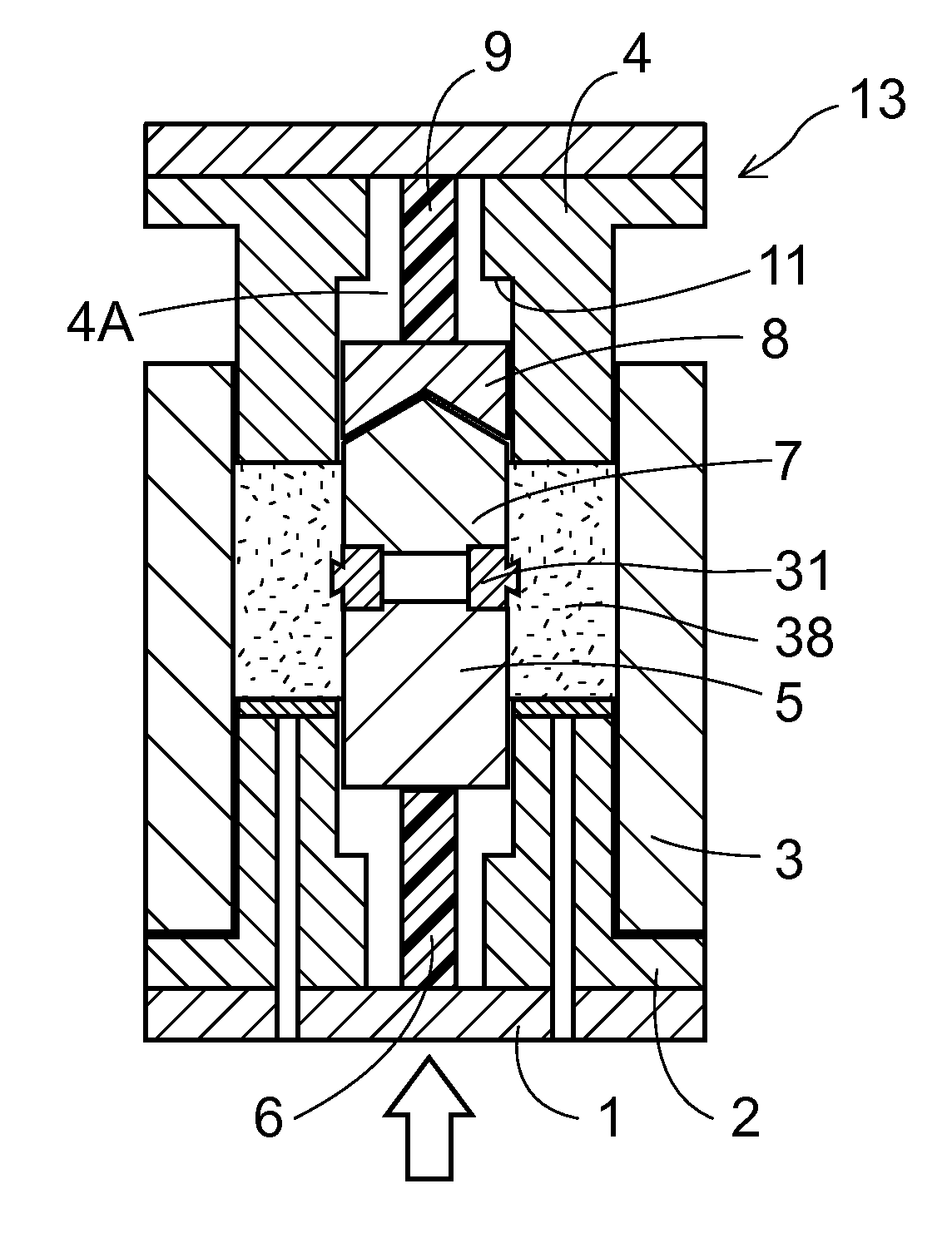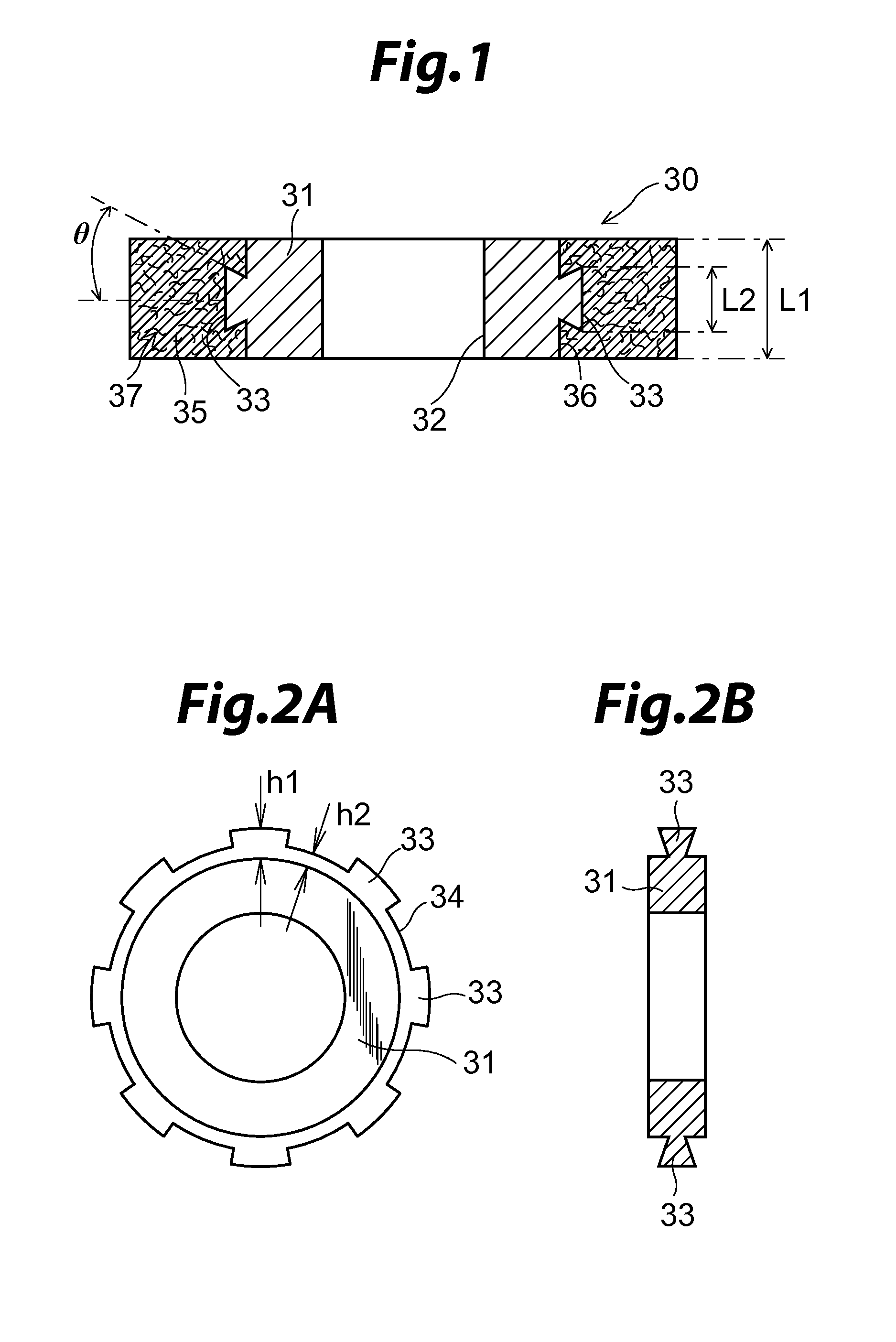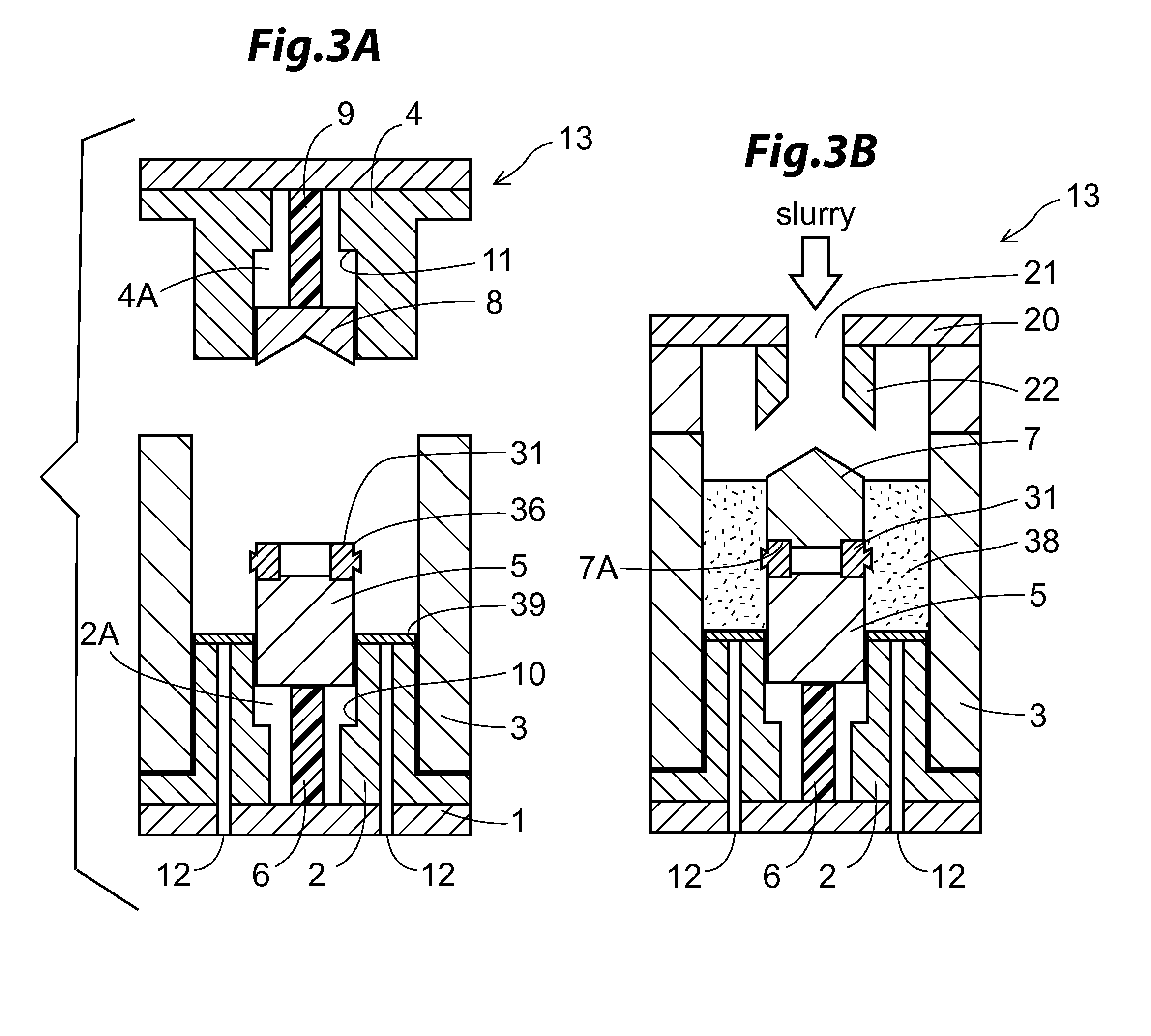Method of manufacturing fiber substrate and method of manufacturing resin rotator
a technology of fiber substrate and resin rotor, which is applied in the field of fiber substrate manufacturing and resin rotor manufacturing methods, can solve the problems of low flowability of thermosetting resin that can be dispersed in water, insufficient bonding strength between the fiber substrate and the metal bushing, and insufficient durability of the resin gear, so as to save time for one step, prolong the life of the mold, and reduce the effect of weigh
- Summary
- Abstract
- Description
- Claims
- Application Information
AI Technical Summary
Benefits of technology
Problems solved by technology
Method used
Image
Examples
example 1
[0159]In order to prepare slurry, a tank filled with water in such an amount that short fibers would be dispersed at a concentration of 4 g / liter was prepared. Then, short fibers in such an amount that the total amount of the short fibers in the resin molded member would be 40% by volume were poured into the tank. Specifically, 45% by mass of para-aramid short fibers (“Technora (trademark of Teijin Ltd.)” manufactured by Teijin Ltd.) having a single fiber fineness of 1.7 dtex and a fiber length of 3 mm, 50% by mass of meta-aramid short fibers (“Teijinconex (trademark of Teijin Ltd.)” manufactured by Teijin Ltd.) having a single fiber fineness of 2.2 dtex and a fiber length of 3 mm, and 5% by mass of fine fibers obtained by fibrillating “Kevlar (trademark of DuPont) pulp” manufactured by DuPont to a freeness value of 300 ml were poured into the tank. Then, water in the tank was stirred by a stirrer to disperse the short fibers to prepare slurry.
[0160]Next, the filtering-dehydration c...
PUM
| Property | Measurement | Unit |
|---|---|---|
| angle | aaaaa | aaaaa |
| diameter | aaaaa | aaaaa |
| length | aaaaa | aaaaa |
Abstract
Description
Claims
Application Information
 Login to View More
Login to View More - R&D
- Intellectual Property
- Life Sciences
- Materials
- Tech Scout
- Unparalleled Data Quality
- Higher Quality Content
- 60% Fewer Hallucinations
Browse by: Latest US Patents, China's latest patents, Technical Efficacy Thesaurus, Application Domain, Technology Topic, Popular Technical Reports.
© 2025 PatSnap. All rights reserved.Legal|Privacy policy|Modern Slavery Act Transparency Statement|Sitemap|About US| Contact US: help@patsnap.com



